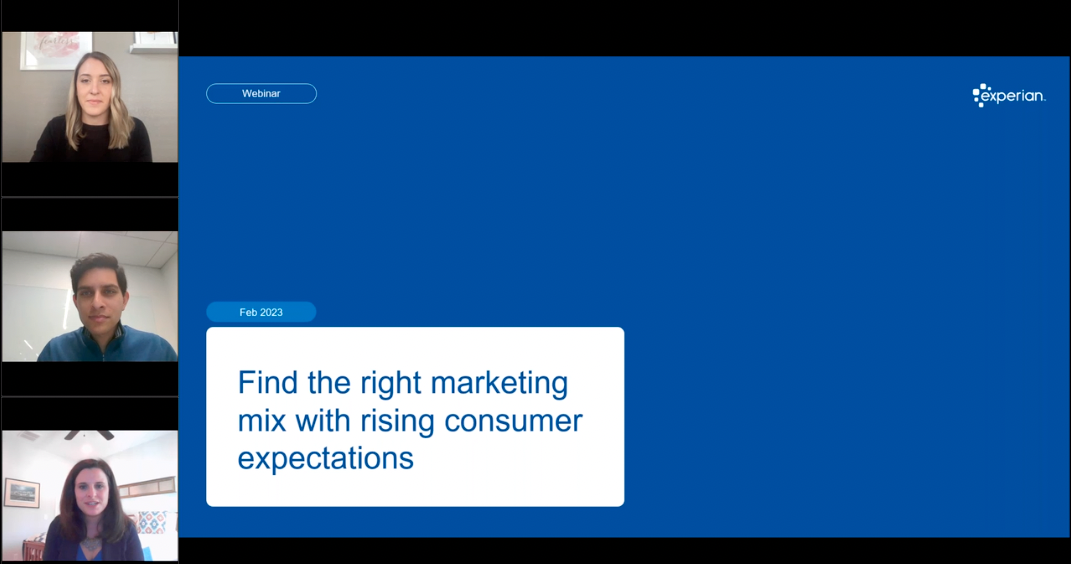Contextual ad targeting paves the way for new opportunities
Advertisers and marketers are always looking for ways to remain competitive in the current digital landscape. The challenge of signal loss continues to prompt marketers to rethink their current and future strategies. With many major browsers phasing out support for third-party cookies due to privacy and data security concerns, marketers will need to find new ways to identify and reach their target audience. Contextual ad targeting offers an innovative solution; a way to combine contextual signals with machine learning to engage with your consumers more deeply through highly targeted accuracy. Contextual advertising can help you reach your desired audiences amidst signal loss – but what exactly is contextual advertising, and how can it help optimize digital ad success?
In a Q&A with our experts, Jason Andersen, Senior Director of Strategic Initiatives and Partner Solutions with Experian, and Alex Johnston, Principal Product Manager with Yieldmo, they explore:
- The challenges causing marketers to rethink their current strategies
- How contextual advertising addresses signal loss
- Why addressability is more important than ever
- Why good creative is still integral in digital marketing
- Tips for digital ad success
By understanding what contextual advertising can offer, you’ll be on the path toward creating powerful, effective campaigns that will engage your target audiences.
Check out Jason and Alex’s full conversation from our webinar, “Making the Most of Your Digital Ad Budget With Contextual Advertising and Audience Insights” by reading below. Or watch the full webinar recording now!
Macro impacts affecting marketers
How important is it for digital marketers to stay informed about the changes coming to third-party cookies, and what challenges do you see signal loss creating?
Jason: Marketers must stay informed to succeed as the digital marketing landscape continuously evolves. Third-party cookies have already been eliminated from Firefox, Safari, and other browsers, while Chrome has held out. It’s just a matter of time before Chrome eliminates them too. Being proactive now by predicting potential impacts will be essential for maintaining growth when the third-party cookie finally disappears.
Alex: Jason, I think you nailed it. Third-party cookie loss is already a reality. As regulations like the General Data Protection Regulation (GDPR) and the California Consumer Privacy Act (CCPA) take effect, more than 50% of exchange traffic lacks associated identifiers. This means that marketers have to think differently about how they reach their audiences in an environment with fewer data points available for targeting purposes. It’s no longer something to consider at some point down the line – it’s here now!
Also, as third-party cookies become more limited, reaching users online is becoming increasingly complex and competitive. Without access to as much data, the CPMs (cost per thousand impressions) that advertisers must pay are skyrocketing because everyone is trying to bid on those same valuable consumers. It’s essential for businesses desiring success in digital advertising now more than ever before.
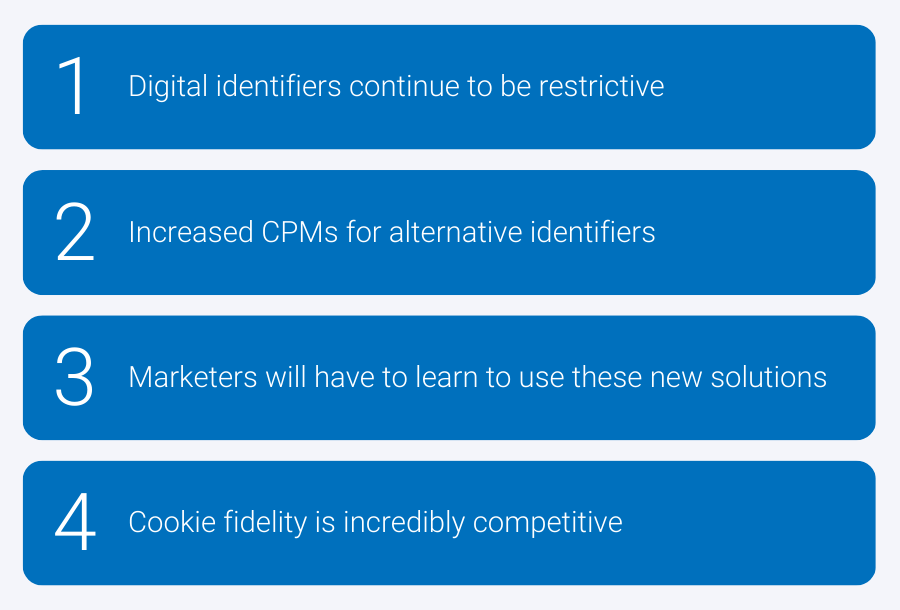
Contextual ad targeting: A solution for signal loss
How does contextual ad targeting help digital marketers find new ways to reach and engage with consumers? What can you share about some new strategies that have modernized marketing, such as machine learning and Artificial Intelligence (AI)?
Jason: We’re taking contextual marketing to the next level with advanced machine learning. We are unlocking new insights from data beyond what a single page can tell us about users. As third-party cookies go away, alternative identifiers are coming to market, like RampID and UID2. These are going to be particularly important for marketers to be able to utilize.
As cookie syncing becomes outdated, marketers will have to look for alternative methods to reach their target audiences. It’s essential to look beyond cookie-reliant solutions and use other options available regarding advertising.
Alex: I think, as Jason alluded to, there’s a renaissance in contextual advertising over the last couple of years. If I were to break this down, there are three core drivers:
- The loss of identity signals. It’s forcing us to change, and we must look elsewhere and figure out how to reach our audiences differently.
- There have been considerable advances in our ability to store and operate across a set of contextual signals far more extensive than anything we’ve ever worked with in the past and in far more granular ways. That’s a huge deal because when it comes to machine learning, the power and the impact of those machine learning models are entirely based on how extensive and granular the data set is that you can collect. Machine learning can pull together critical contextual signals and figure out which constellations, or which combinations of those signals, are most predictive and valuable to a given advertiser.
- We can tailor machine learning models to individual advertisers using all those signals and find patterns across those in ways that were previously impractical or unfeasible. The transformation is occurring because of our ability to capture much more granular data, operate across it, and then build models that work for advertisers.
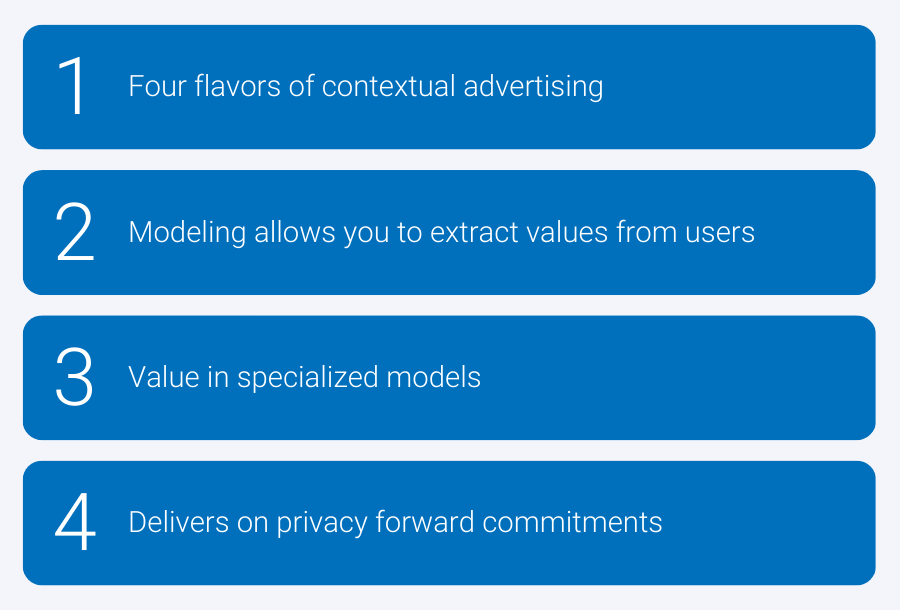
Addressability: Connect your campaigns to consumers
How does advanced contextual targeting help marketers reach non-addressable audiences?
Jason: Advanced contextual targeting allows us to take a set of known data (identity) and draw inferences from it with all the other signals we see across the bitstream. It’s taking that small seed set of either, customers that transacted with you before that you have an identity for, or customers that match whom you’re looking for. We can use that as a seed set to train these new contextual models. We can now look at making the unknown known or the unaddressable addressable. So, it’s not addressable in an identity sense, it is addressable in a contextual or an advanced contextual sense that’s made available to us, and we can derive great insight from it.
One of the terms I like to use is contextual indexing. This is where we take a set of users we know something about. So, I may know the identity of a particular group of households, and I can look at how those households index against any of the rich data sets available to us in any data marketplace, for example, the data Yieldmo has. We can look at how that data indexes to those known users to find patterns in that data and then extrapolate from that. Now we can go out and find users surfing on any of the other sites that traditionally don’t have that identifier for that user or don’t at that moment in time and start to be able to advertise to them based on the contextually indexed data.
Historically, we’ve done some contextual ad targeting based on geo-contextual, and this is when people wanted to do one to one marketing, and geo-contextual outperformed the one to one. But marketers weren’t ready for alternatives to one to one yet. We want marketers to start testing these solutions. Advertisers must start trying them, learning how they work, and learn how to optimize them because they are based on a feedback loop, and they’re only going to get better with feedback.
Alex: Jason, you described that perfectly. I think the exciting opportunity for many people in the industry is figuring out how to reach your known audience in a non-addressable space, that is based on environmental and non-identity based signals, that helps your campaign perform. Your known audience are people that are already converting – those who like your products and services and are engaged with your ads. Machine learning advancements allow you to take your small sample audience and uncover those patterns in the non-addressable space.
It’s also worth noting that in this world in which we are using seed audiences, or you are using your performing audiences to build non-addressable counterpart targeting campaigns, having high-quality, privacy-resilient data sets becomes incredibly important. In many cases, companies like Experian, who have high quality, deep rich training data, are well positioned to support advertisers in building those extension audiences. As we see the industry evolve, we’re going to see some significant changes in terms of the types of, and ways in which, companies offer data, and make that available to advertisers for training their models or supporting validation and measurement of those models.
Jason: Addressable users, the new identity-based users, are critical to marketers’ performance initiatives. They’re essential to training the models we’re building with contextual advertising. Together, addressable users and contextual advertising are a powerful combination. It’s not just one in isolation. It’s not just using advanced contextual, and it’s not just using the new identifiers. It’s using a combination to meet your performance needs.
It’s imperative to start thinking about how you can begin building your seed audiences. What can you start learning from, and how do you put contextual into play today? You are looking to build off a known set and build a more advanced model. These can be specialized models based on your data. You can hone in and create a customized model for your customer type, their profile, and how they transact. It’s a greenfield opportunity, and we’re super excited about the future of advanced contextual targeting.
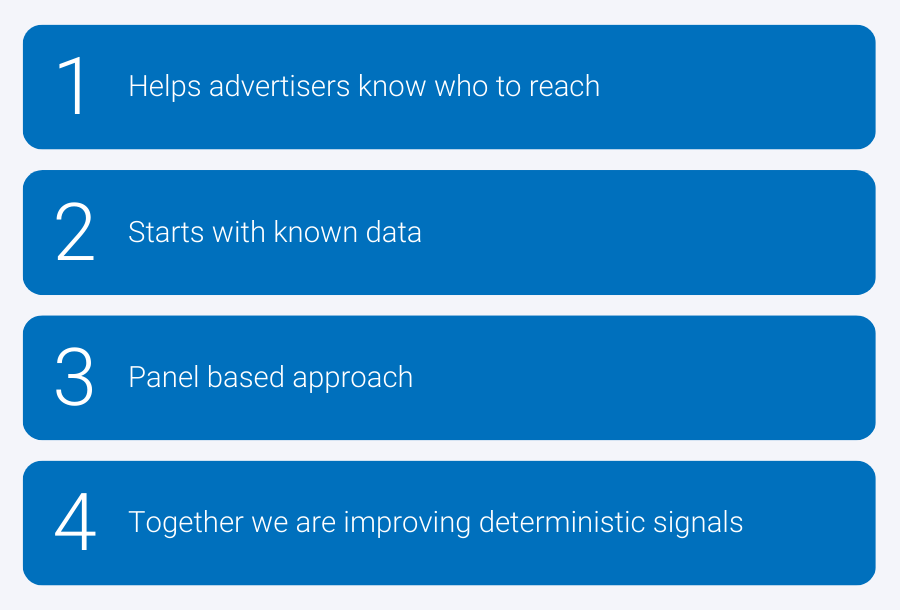
Turn great creative into measurable data points
Why does good creative still play an integral part in digital advertising success?
Jason: Good creative has always been meaningful. It’s vital in getting people to click on your ad and transact. But it’s becoming increasingly important in this new world that we’re talking about, this advanced contextual world. The more signal that we can get coming into these models, the better. Good creative in the proper ad format that you can test and learn from is paramount. It comes back to that feedback loop. We can use that as another signal in this equation to develop and refine the right set of audiences for your targeting needs.
Alex: If you imagine within the broader context of identity and signal loss, creative and ad format becomes incredibly powerful signals in understanding how different audiences interact with and engage with different creative. In the case of the formats that serve on the Yieldmo exchange, we’re collecting data every 200 milliseconds around how individual users are engaging with those ads. Interaction data like the user scrolling back or the number of pixel seconds they stay on the screen, fills this critical gap between video completes and clicks. Clicks are sparse and down the funnel, and views and completes are up the funnel. All those attention and creative engagement type metrics occupy the sweet spot where they’re super prevalent, and you can collect them and understand how different audiences engage with your ads. That data lets you build powerful models because they predict all kinds of other downstream actions.
Throughout my career, I learned that designing or tailoring your creative to different audience groups is one of the best ways to improve performance. We ran many lift studies with analysis to understand how you can tailor creative customized for individual audiences. That capability and the ability to do that on an identity basis is starting to deteriorate. The ability to do that using a sample of data or using a smaller set of users, either where you’re inferring characteristics or you’re looking at the identity that does exist in a smaller group, becomes powerful for being able to customize your creative to tell the right story to the right audience. When you layer together all the interaction data collected at the creative level on top of all the contextual and environmental signals, you can build powerful models. Whether those are driving proxy metrics, or downstream outcomes, puts us in a powerful position to respond to the broader loss of identity that we’ve relied on for so many years.

Our recommendations for marketers for 2023 and beyond
Do you have recommendations for marketers building out their yearly strategies or a campaign strategy?
Jason: Be proactive and start testing and learning these new solutions. I mentioned addressability and being in the right place at the right time. That’s easier in today’s third-party cookie world. But as traditional identity is further constricted, you will have these first-party solutions that will not be at scale, so you’re less likely to find your user at the scale you want. It would be best if you thought about how to reach that user at the right place at the right time. They may not be seen from an identity basis. They might not be at the right place at the right time when you were delivering or trying to deliver an ad. But you increase your chance of reaching them by building these advanced contextual targeting audiences using this privacy-safe seed ‘opted-in’ user set; this is a way to cast that wider net and achieve targeted scale.
Alex: Build your seed lists, test your formats with different audiences, and understand what’s resonating with whom. Take advantage of some of the pretty remarkable advances in machine learning that are allowing us, really, for the first time to fully uncork the potential and the opportunity with contextual in a way that we’ve never done before.
Jason: At the end of the day, it’s making the unaddressable addressable. So, it’s a complementary strategy; having that addressable piece will feed the models. But also, that addressable piece still needs to be identity-based, addressable still needs to be part of your overall marketing strategy, and you need to complement it with other strategies like advanced contextual targeting. The two of them together are super complimentary. They learn from each other, and it’s a cyclical loop. Now is the time to take advantage and start testing and understanding how these solutions work.
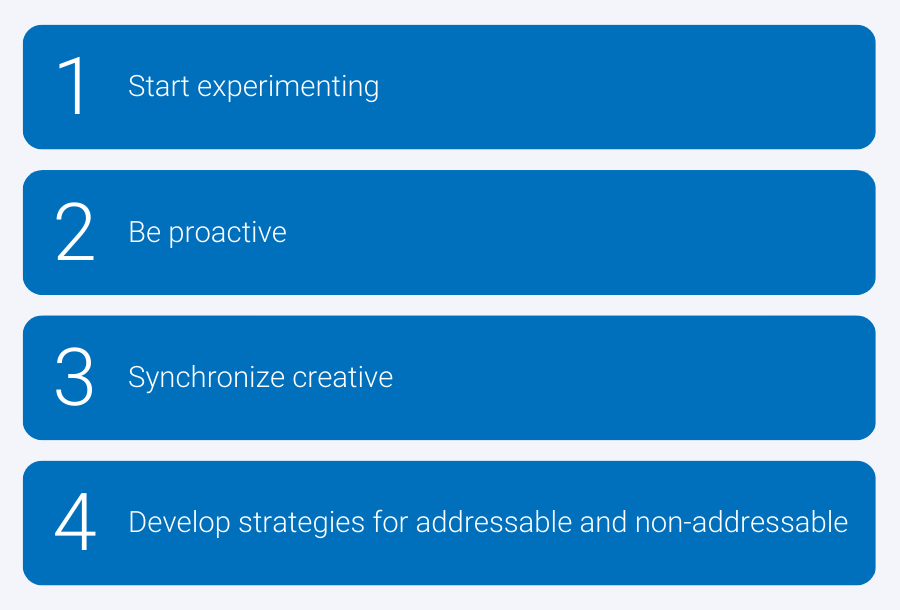
We can help you get started with contextual ad targeting
Contextual advertising can help you stay ahead of the curve, identify your target audience, and continue to drive conversions despite signal loss. We’ve partnered with Yieldmo to help make sure that your marketing campaigns are reaching the right target audiences on the platforms that are most relevant. To get started with contextual ad targeting to reach the right audience at the right time and drive conversions, contact our marketing professionals. Let’s get to work, together.
Find the right marketing mix in 2023
Check out our webinar, “Find the right marketing mix with rising consumer expectations.” Guest speaker, Nikhil Lai, Senior Analyst from Forrester Research, joins Experian experts Erin Haselkorn, and Eden Wilbur. We discuss:
- New data on the complexity and uncertainty facing marketers
- Consumer trends for 2023
- Recommendations on finding the right channel mix and the right consumers
About our experts

Jason Andersen, Senior Director, Strategic Initiatives and Partner Solutions, Experian
Jason Andersen heads Strategic Initiatives and Partner Enablement for Experian Marketing Services. He focuses on addressability and activation in digital marketing and working with partners to solve signal loss. Jason has worked in digital advertising for 15+ years, spanning roles from operations and product to strategy and partnerships.

Alex Johnston, Principal Product Manager, Yieldmo
Alex Johnston is the Principal Product Manager at Yieldmo, overseeing the Machine Learning and Optimization products. Before joining Yieldmo, Alex spent 13 years at Google, where he led the Reach & Audience Planning and Measurement products, overseeing a 10X increase in revenue. During his time, he launched numerous ad products, including YouTube’s Google Preferred offering. To learn more about Yieldmo, visit www.Yieldmo.com.
Latest posts

At this year’s Shoptalk, one thing was crystal clear: Retailers are no longer just competing on price or product—they’re competing on experience. And in that race, customer expectations are not just the starting line—they’re the finish line, too. Over three days of discussions, demos, and side conversations, Shoptalk 2025 delivered a fresh look at how brands and advertisers are adapting to an increasingly blended retail environment. The show spotlighted not just what\’s new in retail media and AdTech—but how the industry is rethinking the entire shopper journey. What we heard again and again on the ground was this: there is no one-size-fits-all playbook anymore. Every retailer is navigating their own unique mix of identity, data, tech, and consumer needs. The winners will be those who stay nimble while staying connected to what customers actually want. Experience is everything Across sessions and show floor chats, the core message was this: customers expect more—and retailers must rise to meet that moment. Whether it’s a personalized in-store interaction or a seamless connected TV (CTV) ad experience, people want value, inspiration, and storytelling wherever they shop. That means digital and physical channels must work together effortlessly. Retailers aren’t just “digitizing” the in-store experience anymore—they’re rethinking how to make the entire shopping journey feel easy, consistent, and enjoyable. This shift isn’t just about touchpoints. It’s about changing the way retailers think about the customer experience. Loyalty isn’t a program, it’s every interaction Loyalty emerged as a major theme—one that goes well beyond points and perks. Speakers from Wayfair, DSW, and Lowe’s emphasized that every customer interaction, not just formal programs, should be viewed as an opportunity to build emotional loyalty. Sarah Crockett, CMO of DSW, shared that emotional tactics resonate more deeply than transactional rewards—echoing a broader shift toward customer-centric, experience-driven engagement. “Loyalty today isn’t just about perks. It’s about trust, connection, and knowing your customer on a deeper level. Every interaction is a chance to build that relationship.”Sam Zahedi, Sr. Enterprise Partnerships Manager Retail media gets real Retail media networks (RMNs) took center stage, but the tone is changing. With so many players flooding the space, retailers and advertisers alike are asking tougher questions: How do you stand out? How do you prove value? And perhaps most critically—how do you build trust? Standardization came up in several sessions, but as Harvey Ma from Sam’s Club MAP pointed out, standardization alone won’t fix what\’s been lost: foundational trust and transparency. Advertisers want more than impressions—they want insights, outcomes, and measurement they can count on. “There’s no one playbook—nor should there be. Every retailer, every RMN, and every customer is different. Success comes from building strategies as unique as the audiences they serve.”Anne Passon, Sr. Director, Sales, Retail Many brands came to our team asking how Experian can help extend their audiences into new environments like social and CTV. Here’s how we do it: We work with our RMN partners to take their organized, clean, complete, and highly usable customer records and expand them to include other digital identifiers. By adding digital IDs such as hashed emails (HEMs), mobile ad IDs (MAIDs), CTV IDs, and Universal IDs like Unified I.D. 2.0 (UID2) or ID5, we ensure that the retailer\’s entire customer base can be reached. On their own, RMNs only know the digital identity of a portion of their customer base. With Experian\’s help, they can add digital IDs to their entire customer base. As a result, marketers can reach all of an RMN\’s customers, including those whose identities were previously unknown. They can reach these customers both onsite and offsite, thanks to the array of addressable IDs we provide. This increase in addressability leads to higher revenue for the RMN. Moving at the speed of people One of the most thought-provoking moments came from Nikki Laughlin from McClatchy Media during a Brand Innovators session. She asked a simple but powerful question: How can we move at the speed of people if we’re always looking backward at data? It’s a challenge we’re hearing more often—marketers want to be proactive, not just reactive. That requires faster insights, cleaner connections between signals, and a shift from static audiences to living, evolving ones. Experian\’s identity and data solutions aren’t just about better targeting—they’re about helping brands activate smarter, faster, and with more confidence across the full media ecosystem. A marketplace of possibilities The best part of Shoptalk? The spontaneous moments. The side conversations where ideas turned into opportunities. We had several discussions that signaled new partnerships on the horizon—some with current clients, others brand new. What united them was a desire to co-create: to build something more tailored, more agile, more customer-first. Of course, there were also shared challenges. Retailers are navigating how to stay customer-centric while grappling with complex, sometimes controversial tech—from AI to influencers to evolving data privacy norms. But if there was one consistent thread, it was this: retailers are hungry for clarity and collaboration. Forget the playbook, follow the customer Shoptalk 2025 reminded us that while tech and trends come and go, the most successful retail strategies still start with one thing: knowing your customer. That’s what fuels smarter activation, stronger measurement, and more meaningful experiences—whether online, in-store, or across emerging media channels. If you\’re rethinking your retail strategy or want to explore how Experian can support your goals across identity, retail media, or CTV, let’s talk. Let\’s connect and explore what\’s possible Latest posts
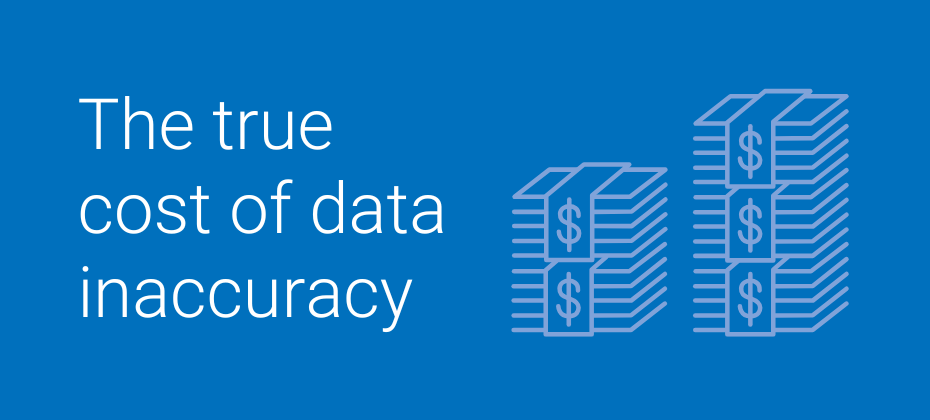
Originally appeared in MarketingProfs We all understand the importance of data quality. Metrics like third-party validations, match rates, and accuracy scores help us assess data quality on its own terms. Yet too often, organizations struggle to connect high-quality data with real-world business outcomes. How does data accuracy directly impact the ability to reach target audiences and campaign performance? Scale and cost: The tradeoffs of accuracy Marketers are frequently incentivized to prioritize broad reach, even at the expense of precision. This often leads to decisions driven by short-term gains—reaching more people at a lower cost. The temptation is deceptively straightforward, but deep down we know overly simplistic approaches are likely to fall short. Cheaper data solutions, even if they seem to provide greater reach, mask a deeper issue. The data may not be accurate. In fact, the initial savings from cheaper data typically result in higher long-term costs due to inefficiencies and waste that are hard to track. Unless you’re carefully evaluating your campaign results, it can be difficult to see where the inefficiencies are creeping in. The hidden cost of inaccurate data Programmatic platforms make it easy for mistargeted impressions to slip through unnoticed. Common issues include: Stale data, where consumer behaviors and locations have changed but the data hasn’t. Inactive signals, where you think a digital identifier like a device ID is addressable, but the device hasn’t been used in months. Disparate or duplicative data, where you think you’re reaching three people but in fact it’s just one person who you’re frequency bombing. Nobody likes getting the same ad over and over again. It’s like if your co-worker messaged you “hey” five times in a row. Direct mail waste is tangible: towering stacks of returned mail serve as undeniable reminders of inefficiency, not to mention the financial costs of wasted postage. Digital campaigns, by contrast, often obscure their inefficiencies within complex programmatic platforms or impression reports. It’s like watching a gust of wind scatter piles of paper into the ether—it\’s hard to track and quantify. As a result of these data inaccuracies, brands mistakenly assume they’re optimizing their budgets when, in fact, they’re hemorrhaging money and reaching the wrong people with a message they don’t care about. It’s a marketer’s nightmare scenario. The perceived savings from cheaper, less accurate data turn out to be an illusion. The compounding effect of inaccurate data Consider a situation where an inaccurate insight or signal prompts a brand to adjust its targeting toward an underperforming segment. Each new campaign uses this flawed data to guide its optimizations, amplifying the waste. What starts as a minor inefficiency quickly becomes a significant budget drain, funneling resources into segments that aren’t delivering. If you bake a cake but use salt instead of sugar–each new ingredient only makes the final product more unpalatable. With ad targeting, the feedback loop created by optimization tools exacerbates this issue. Decisions are made based on misleading metrics, perpetuating flawed strategies and causing brands to over-invest in underperforming tactics. Without scrutiny, brands risk building entire strategies on fundamentally flawed insights. The value of investing in the highest quality data With accurate data, brands can zero in on the right audience. This is particularly critical in lookalike modeling. By enriching customer files, brands can understand the nuances of who their best customers are—and how to find more of them. Tailored messaging, based on a consumer’s actual behaviors and interests, deepens engagement. Conversion rates rise as campaigns meet customer needs. Accurate data also provides insights that aren’t immediately obvious. Sometimes, seemingly minor behaviors or unexpected demographic segments can emerge as key drivers of conversions. It’s like finding the one avocado at the grocery store that’s perfectly ripe…you’re well on your way to delicious guacamole. To truly grasp the impact of data accuracy, traditional validation metrics such as third-party assessments (e.g. Truthset) should be paired with other performance indicators that show you how well data reflects actual consumer behavior. With this complete picture in view, the choice is obvious: quality data is worth the premium. Acting on what the data tells you Collecting accurate data is just the first step—the real challenge is having the ability to act on what it reveals. Many brands enter campaigns with preconceived notions about their target audience, only to find the data tells a different story. Ignoring these insights stifles growth. The value of data-driven marketing lies in trusting the insights and adapting strategies accordingly. How to test if your current approach is working We understand that changing data providers can feel daunting, but there are low-lift ways to explore whether your current approach is truly delivering. Test the waters by selecting an Experian Audience on a major platform or building a custom audience to see how your campaigns perform. Alternatively, collaborate with Experian’s insights team to gain a deeper understanding of your audience and determine if it aligns with your current strategy. It’s a small step that could lead to a big impact. Get in touch with our team today Latest posts
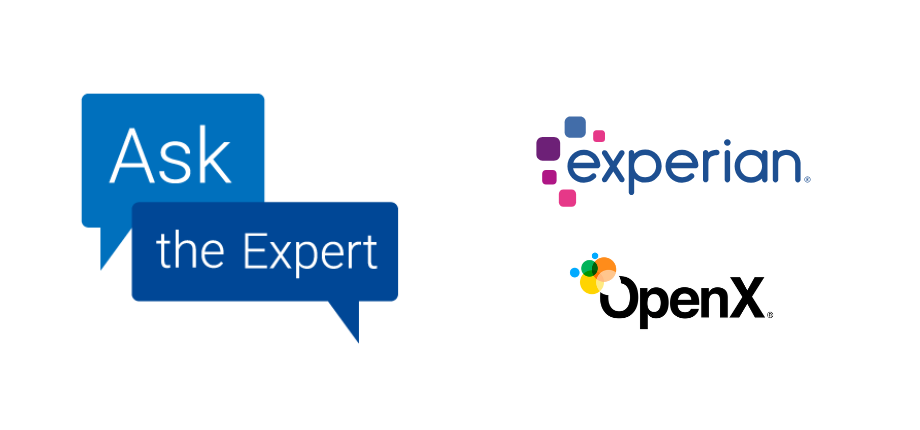
In our Ask the Expert Series, we interview leaders from our partner organizations who are helping lead their brands to new heights in AdTech. Today’s interview is with Brian Chisholm, SVP of Strategic Partnerships at OpenX. About OpenX OpenX is an independent omni-channel supply-side platform (SSP) and a global leader in supply-side curation, transparency, and sustainability. Through its 100% cloud-based tech stack, OpenX powers advertising across CTV, app, mobile web, and desktop, enabling publishers to deliver marketers with improved performance and dynamic future-proofed solutions. With a 17-year track record of programmatic innovation, OpenX is a direct and trusted partner of the world’s largest publishers, working with more than 130,000 premium publisher domains and over 100,000 advertisers. As the market leader in sustainability, OpenX was the first AdTech company to be certified as CarbonNeutral™ and third-party verified for achieving its SBTi Net-Zero targets. Learn more at www.openx.com. Collaboration solves programmatic challenges Could you share the story behind the partnership between OpenX and Experian and how this collaboration differs from typical data-provider/DSP or SSP relationships in the market? What unique challenges in programmatic advertising does this partnership solve? OpenX first partnered with Experian in 2019 when we were building the industry’s first data-driven supply-side curation platform. Being the only SSP with a proprietary people-based identity graph (further enriched by Experian) gives OpenX a unique set of capabilities that are only growing in value in the market. We are seeing retail media networks, large agency planning platforms, and indie and specialty shops lean into OpenX’s tools to match, activate, and measure people-based audiences through our robust curation platform and premium supply. Enhancing campaigns with data enrichment How does combining Experian\’s marketing data with OpenX\’s technology create tangible benefits for advertisers, agencies, and publishers? Last year, we expanded our partnership with Experian to enrich our digital IDs with Experian’s Digital Audiences, essentially making Experian data available directly to marketers across all OpenX supply and formats, including CTV. For marketers, this direct integration increases both match and activation rates. Meaning, not only do we match more of the starting audience universe to our system, we then provide more opportunities to identify and transact on those users in the bidstream. The result is greater reach for buyers even in previously unaddressable environments like Safari or mobile web – and publishers benefit from the increased addressability OpenX provides their supply. Delivering impactful inventory solutions OpenX has been enhancing its curation offerings beyond just providing curated marketplaces. Could you describe the strategic shift you’re making in how you package and deliver inventory? At OpenX, we have a broader and more dynamic view of curation. It’s not just about gathering data or bundling inventory; it’s about layering on identity-based precision, enabling the targeting of the right audiences with premium, brand-safe inventory for our clients. We saw the value of curating inventory and audiences on the supply side early on. We started by building capabilities for our own exchange and then found that our approach created tremendous value for data owners and marketers alike. Over the past five years, we’ve been continuously investing our curation platform capabilities to super serve those partners. As a result, we have what we think is by far the most robust and flexible platform in the market. We can match and integrate with any kind of data, curate supply at a granular level, activate audiences and help measure outcomes in multiple ways. We also provide turnkey integrations to third-party platforms. Balancing customization with scalability in deals There\’s often tension between customization and scalability when it comes to curated deals. How does OpenX strike the right balance to meet varied advertiser objectives while ensuring operational efficiency for publishers? Truthfully, we’re not finding that scale suffers with curation. We currently have 237 million monthly active users in our exchange that we can match and activate curated deals against. That’s a unique claim for an SSP, and we back it up with our identity graph. This directly benefits our publishers who see a 20% increase in overall bid density and a 118%+ increase in win rate for curated deals vs. open market. Data-driven curation done on the supply side offers efficiency and drives results for buyers, while publishers are able to activate their own first-party data programmatically, increase their monetization, and maximize the value of their inventory. As the industry continues to adapt to a privacy-first, consent-based ecosystem, data-driven curation will play a key part in ensuring both sides of the marketplace continue to thrive. Driving results with CTV curation Connected TV is arguably the most dynamic channel in programmatic right now. How do curation improvements accelerate more precise or outcome-based targeting in CTV environments? I want to take this a step further and say that biddable is the future of CTV. Not only does biddable enable advertisers to purchase closer to campaign activation, it gives buyers the option to curate deals, flexibility, addressability and ease of transacting at will. No minimums, no commitments. Our CTV strategy has been centered around combining flexibility, efficiency, and real-time optimization capabilities with access to premium, direct, glass-on-wall inventory. TV by OpenX, powers the direct activation of curated audiences at scale through data-driven, contextual, attention, and sustainability offerings. What does this mean for buyers? Advertisers can choose from any one of OpenX’s 250+ data partners, including Experian, to target an audience via CTV inventory using OpenX’s cross-platform identity graph. This setup allows buyers to increase scale and optimize toward their desired campaign outcomes via their preferred DSP. The focus on inventory quality and scale combined with advanced targeting curation provides a key driver of performance in CTV. Identity resolution for better CTV measurement In a channel as fragmented as CTV, measuring performance can be complex. What role does identity resolution play in better measurement and attribution? How do Experian\’s identity capabilities integrate within your platform to drive measurable outcomes? We talked about the value of audience targeting via curation above. Another critical driver is our ability to power true closed-loop measurement for advertisers or partners like retail media networks. OpenX is able to provide automated log-level reporting via BIDS, which includes exposed IDs from our proprietary ID graph back to our partners in near real time. This closed-loop attribution enables partners to measure real-world outcomes like ROAS, conversion rates and incrementality. Insights and learnings from data can then be used to make optimizations mid-campaign, to further improve performance. Measurement starts with having a strong foundation to identity resolution – which Experian helps us achieve. Tailoring audience strategies in the auto sector The automotive vertical demands highly specific audience insights—everything from in-market signals to lifestyle and aftermarket service and parts data. How does the Experian–OpenX partnership enhance audience strategies in auto? Experian’s deterministic data, combined with the OpenX identity graph, empowers buyers with identity tools to create targeted audience segments of likely auto intenders. For verticals that have high customer acquisition costs like auto, these insights are particularly valuable, as buyers often struggle to identify their audiences at scale in environments that drive campaign performance. Experian’s automotive data is one of our most requested audiences from buyers. We match Experian’s high-quality data directly to our platform, often leveraging Experian’s IDs, which leads to greater scale and fidelity. In addition, our platform can curate supply to a granular level to drive results for buyers. Complying with evolving privacy regulations With data privacy regulations multiplying—like GDPR, CCPA, and others—how does OpenX’s direct connection with Experian ensure responsible data usage and compliance? At OpenX, we don’t see privacy regulations as a challenge but rather an opportunity. Instead, it’s a key differentiator for us. We’ve had a strong focus on data and identity since 2017, and we believe that if you’re talking about these topics but not talking about privacy, you’re missing an important piece of the equation. Regardless of the environment — CTV, mobile, app, or web — in today’s privacy-focused world, success in data and identity is inseparable from a commitment to privacy. We support this obligation with dedicated leadership that helps our partners navigate evolving global regulations, including critical areas like child-directed content under new laws from Australia to Maryland. Thanks for the interview. Any recommendations for our readers if they want to learn more? To learn more about our solutions and partnership opportunities, visit the OpenX website or contact your Experian account representative to schedule your free match test. Contact us About our expert Brian Chisholm, Senior Vice President of Strategic Partnerships, OpenX Brian Chisholm is the Senior Vice President of Strategic Partnerships at OpenX, where he spearheads the curation, data, and identity efforts. He and his team have been instrumental in building out OpenX’s industry-leading curation platform and partnerships. With more than two decades of experience in digital media, Brian has developed partnerships that leverage and expand OpenX’s core technology assets and deliver material value for the company’s buyer, publisher, and platform partners. Before joining OpenX, Brian held senior roles at innovative startups and digital stalwarts, including Overture/Yahoo, SpotRunner, and Apptera. Latest posts

